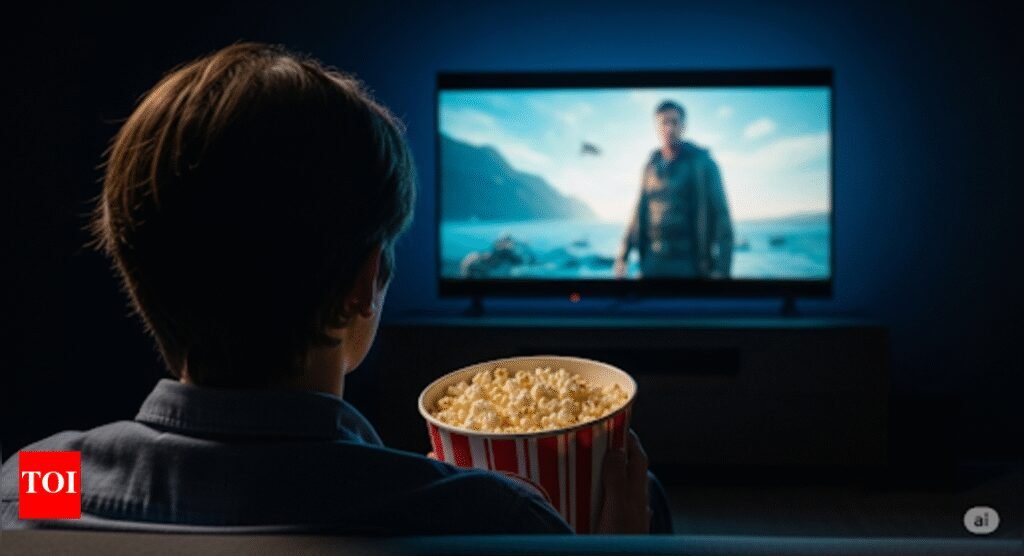TL;DR:
- Shahid VIP, Netflix, and StarzPlay remain the most popular streaming platforms in the GCC, catering to diverse language preferences.
- Regional content production is rising, with Saudi Arabia and UAE leading Arabic originals.
- Expats favour a mix of global hits and tailored regional content, from Bollywood to Turkish dramas.
- Pricing, platform availability, and content censorship shape viewing habits across the Gulf.
As streaming services boom across the Gulf, expats are spoilt for choice but which platforms are truly leading the pack in 2025? From Shahid VIP’s dominance in Arabic content to Netflix’s international allure and StarzPlay Arabia’s regional strategy, the competition for screens in Saudi Arabia, UAE, and beyond is intensifying. Here’s a closer look at the Gulf’s streaming wars, who’s winning among expats, and how viewing preferences are evolving in the region.
Streaming Wars in the GCC: What’s Driving Viewer Choices?
The Gulf’s streaming landscape in 2025 is more competitive than ever, shaped by a growing expat population, high smartphone penetration, and an increasing appetite for both global and regional content. According to DataReportal’s 2025 UAE Digital Report, the UAE has over 99% internet penetration, while Saudi Arabia also exceeds 99%, fuelling on-demand content consumption across platforms like Shahid VIP, Netflix, StarzPlay Arabia, and Amazon Prime Video. A report by Statista indicates that over 57% of UAE residents subscribe to at least one paid streaming service, while in Saudi Arabia, the figure is about 48%, reflecting both demand and market potential. The presence of a culturally diverse workforce in the UAE, Qatar, and Bahrain drives platforms to balance between Arabic, English, Hindi, and Tagalog content offerings.
Shahid VIP and StarzPlay Arabia: Leading Regional Platforms
Shahid VIP, owned by Saudi Arabia’s MBC Group, continues to dominate Arabic-language streaming in the GCC. In 2025, it boasts more than 3 million subscribers, per MBC Group’s March 2025 statement, thanks to exclusive Arabic series, live TV channels, and original productions tailored to Gulf sensibilities. Similarly, StarzPlay Arabia, headquartered in the UAE, maintains its strong foothold with over 2.1 million active subscribers. StarzPlay is favoured not just for its English-language catalogue but also for partnerships that stream Bollywood films, Turkish dramas, and cricket tournaments like the PSL, catering heavily to the South Asian expat audience. StarzPlay’s partnership with Etisalat and STC allows for bundled subscriptions, increasing affordability and reach, particularly in Saudi Arabia and the UAE.
Netflix’s Growing Arabic Originals Portfolio
While Netflix remains a dominant global player, it has intensified efforts to localise content in the Middle East. In January 2025, Netflix announced an expanded slate of Arabic Originals, including Saudi-produced thrillers and Emirati family dramas. According to Netflix, Arabic-language content consumption on the platform has grown by 40% year-on-year, especially in Saudi Arabia and Kuwait. Netflix’s focus on regional storytelling aligns with Saudi Arabia’s Vision 2030, which aims to elevate local entertainment industries. This localisation strategy has enhanced its appeal among Gulf nationals and second-generation expats fluent in Arabic.
The Expat Preferences: A Multi-Language Diet
Expats in the GCC continue to shape streaming preferences. South Asian workers in the UAE and Qatar heavily consume Bollywood films and Indian web series on platforms like Amazon Prime Video and Disney+ Hotstar, although access can vary based on local licensing. Filipino expats largely use iWantTFC, a global Filipino content platform, which reports steady growth in GCC subscriptions as of ABS-CBN’s 2025 mid-year update. Moreover, Turkish dramas dubbed in Arabic, available on Shahid VIP and StarzPlay, remain perennially popular with Arab and non-Arab expats alike. This cross-cultural appeal helps platforms retain diverse demographics.
Content Censorship & Regional Sensitivities
One key constraint for streaming services in the Gulf remains censorship. Both UAE and Saudi Arabia have content regulations that restrict or edit scenes involving nudity, LGBTQ+ themes, and excessive violence. According to Arab News, platforms operating in the GCC must comply with National Media Council guidelines in the UAE and equivalent Saudi regulatory frameworks. This leads to edited versions of global shows, though some platforms provide advisory notices on such edits. Such content moderation has not significantly dampened subscriptions, as users weigh content access alongside regional values.
Price Points and Platform Competition
Pricing remains a decisive factor. As of July 2025, here’s a snapshot of monthly subscription fees in the UAE (approximate USD conversion):
- Shahid VIP: ~$11.49/month (AED 42)
- StarzPlay: ~$10.35/month (AED 38)
- Netflix Standard: ~$10.61/month (AED 39)
- Amazon Prime Video: ~$4.90/month (AED 18)
Bundled telecom packages often reduce these costs further. For example, Etisalat’s eLife package includes StarzPlay access, while STC offers Shahid VIP subscriptions with specific plans.
Trends Shaping the Future of Streaming in the GCC
- Original Productions: Regional platforms like Shahid VIP are scaling up their original productions, planning to invest $100 million by end-2025, per MBC Group statements.
- Sport Streaming: With cricket’s popularity, StarzPlay and Amazon Prime Video stream matches like the PSL and Indian Premier League, appealing to South Asian expats.
- Tech Innovation: AI-driven recommendations, localised payment options (like STC Pay), and 4K streaming are becoming standard, enhancing user experience.
- Cross-Platform Viewing: Smart TV compatibility and mobile-first designs cater to the Gulf’s highly mobile user base, where over 90% of streaming occurs via smartphones
In 2025, the Gulf’s streaming ecosystem is dynamic and expat-driven, yet increasingly regionalised. Platforms that blend high-quality Arabic originals with popular global content are thriving, while telecom bundling strategies keep services affordable. As more Gulf countries invest in media and entertainment, the content landscape is set to grow further, serving a cosmopolitan viewer base that toggles between K-dramas, Bollywood hits, Arabic thrillers, and Premier League football.


